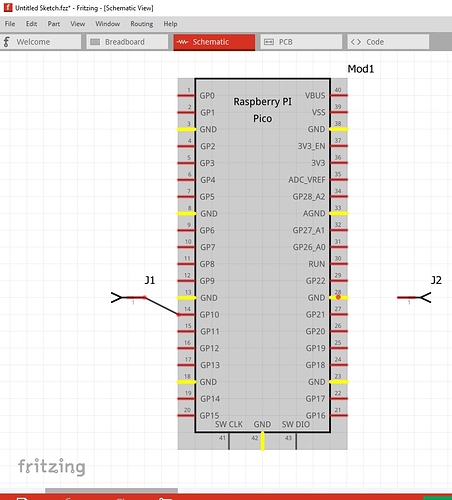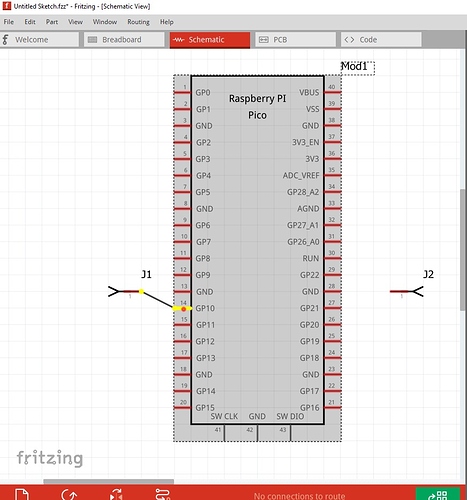Welcome aboard!
Over all a nice job, the lack of holes in pcb was the major issue, the rest are fairly minor (although the lack of a layerID in breadboard means that if exported from a sketch as an svg, the part won’t appear!) I have a python script that will find various such errors in a part available here:
which will flag errors (that’s what alerted me to no holes) and change some things (remove px from font size which you looked to have done, and inline style commands) that Fritzing doesn’t support. Although I’m not all that familiar with castellatization I don’t think the hole should prevent soldering the module to the board, while leaving the user the option of installing .1in headers to plug the module in if they wish. If you disagree, it is easy enough to remove the pads I added that create the holes and move the connectorIds back to the paths. Fritzing PCB view shows holes for through hole pads even when they are not in the gerbers (and therefore the board.) There have been more than one case with incorrectly configured parts where users have had boards made only to discover they are useless because of no holes, so I would lean towards leaving the holes if they won’t case a problem with soldering the board.
As far as I know parts are released under the Creative Commons share alike license (Fritzing itself is gpl), in any case I’m good with sharing (as the part is mostly yours anyway ![]() ) While I’m here there is a RPI 4B part available here that you are welcome to as well:
) While I’m here there is a RPI 4B part available here that you are welcome to as well:
They don’t appear to be to me. The grounds are all linked:
but the gpio is not (the other pin should light yellow when left clicked on if they are connected to each other internally or by an external wire.)
I did change the internal pin number order to start the internal pins at pin0 and pin0 as pin1 on the module (aligned as if it was an IC), but that shouldn’t affect this. The above image reminds me of one other error, on your part schematic doesn’t have terminalIds defined and thus if you connect a wire as I did here at a 45 degree angle, the connection is to the middle of the pin rather than to the end as is desirable. In this case the terminalId is a 10thou by 10thou rectangle positioned on the end of the pin.
Peter

